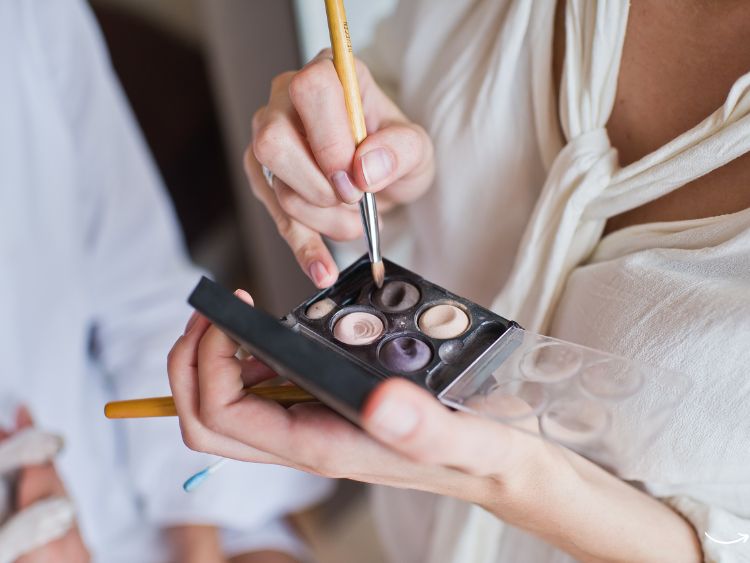In today’s world, makeup is more than just a tool for enhancing beauty; it is a powerful means of self-expression. For transgender individuals, makeup can be an essential part of affirming their gender identity and boosting self-confidence. Whether you’re a transgender person seeking makeup tips or a makeup artist looking to expand your skills, understanding the unique needs of transgender clients is crucial. This guide aims to provide comprehensive insights and practical advice on becoming a skilled makeup artist for transgender individuals.
Why Makeup Matters for Transgender Individuals
Makeup is not just about aesthetics; it’s about identity and empowerment. For transgender people, makeup can help align their external appearance with their internal identity. This alignment can significantly impact their confidence, mental health, and overall well-being.
Key Reasons Makeup is Important:
- Affirmation of Gender Identity: Makeup can help transgender individuals present their gender in a way that feels authentic to them.
- Boosting Self-Esteem: The right makeup can enhance features that affirm one’s gender, boosting self-confidence.
- Reducing Dysphoria: Makeup can help alleviate feelings of dysphoria by allowing individuals to see their true selves in the mirror.
- Expressing Individuality: Makeup provides a creative outlet for personal expression and style.
Essential Skills for Makeup Artists Working with Transgender Clients
Understanding Unique Needs
To be a successful makeup artist for transgender clients, it’s essential to understand their unique needs and concerns. This understanding goes beyond basic makeup application and involves empathy, knowledge of gender diversity, and an appreciation for each client’s journey.
Key Skills:
- Listening and Empathy: Active listening helps you understand the client’s goals and concerns. Empathy ensures you provide a supportive and affirming environment.
- Knowledge of Hormonal and Surgical Effects: Awareness of how hormone therapy and surgeries affect the skin and facial structure is crucial.
- Customization: Each client is unique. Customizing techniques to suit individual needs is vital for achieving the best results.
Makeup Techniques for Transgender Women
Transgender women often seek to feminize their appearance through makeup. Here are some essential techniques:
Contouring and Highlighting
Contouring helps create a more traditionally feminine facial structure. Highlighting certain areas can bring attention to desired features.
- Jawline Contouring: Use a darker shade to soften a strong jawline.
- Cheekbone Highlighting: Apply a highlighter on the cheekbones to accentuate them.
- Nose Contouring: Slim down the nose by applying a darker shade on the sides and a highlighter down the bridge.
Eye Makeup
Eyes are a focal point in feminizing makeup.
- Eyebrows: Shape and define the eyebrows to create a more arched and feminine look.
- Eyeshadow: Use soft, blended eyeshadow to enlarge and enhance the eyes.
- Eyeliner: Winged eyeliner can add a dramatic and feminine touch.
Lip Makeup
Fuller lips are often associated with femininity.
- Lip Liner: Define the lips with a liner to create a fuller appearance.
- Lipstick: Choose colors that complement the client’s skin tone and desired look.
Makeup Techniques for Transgender Men
Transgender men may use makeup to masculinize their appearance or achieve a more natural look.
Contouring for Masculinity
- Jawline Enhancement: Use contouring to create a more pronounced jawline.
- Cheekbone Shadowing: Apply a darker shade below the cheekbones to add depth and definition.
Eye Makeup
Subtle eye makeup can enhance masculine features.
- Eyebrows: Thicker, more defined eyebrows can create a masculine look.
- Neutral Eyeshadow: Use neutral tones to define the eyes without adding femininity.
Beard and Facial Hair
Some transgender men may want to create the illusion of facial hair.
- Stippling: Use a stippling brush and a darker powder or cream to create a beard or stubble effect.
Creating a Safe and Affirming Space
Building Trust with Your Clients
Building trust is essential for a successful makeup artist-client relationship. Here’s how to do it:
- Ask Pronouns: Always ask for and use the client’s preferred pronouns.
- Be Respectful: Show respect for their gender identity and experiences.
- Educate Yourself: Continuously educate yourself about transgender issues and makeup techniques.
Providing a Comfortable Environment
Ensure your workspace is a safe and welcoming place for all clients.
- Privacy: Offer private spaces for makeup application.
- Inclusive Language: Use language that is inclusive and affirming.
- Positive Atmosphere: Create a positive and supportive atmosphere where clients feel valued and respected.
FAQs about Makeup for Transgender Individuals
What are some common makeup challenges faced by transgender women?
Transgender women may face challenges such as beard shadow, masculine facial features, and finding the right products for their skin type. Effective use of color correctors, contouring, and highlighting can help address these issues.
How can makeup help alleviate gender dysphoria?
Makeup can help align a person’s appearance with their gender identity, reducing the disconnect that causes dysphoria. It can also enhance features that affirm one’s gender, boosting confidence and self-esteem.
What should a makeup artist keep in mind when working with transgender clients?
A makeup artist should be respectful, use the client’s preferred pronouns, and understand the unique needs of transgender individuals. Building a trusting and supportive relationship is key.
Summary
Being a makeup artist for transgender individuals is not just about applying makeup; it’s about understanding, empathy, and creating a supportive environment. By mastering the techniques specific to transgender clients and fostering a respectful and inclusive atmosphere, makeup artists can significantly impact their clients’ lives. Remember, makeup is a powerful tool for self-expression and affirmation, and when used with care and skill, it can transform lives.
Authoritative Links
- https://www.glaad.org/transgender
- https://www.transgendermap.com
- https://www.hrc.org/resources/transgender
- https://www.plannedparenthood.org/learn/gender-identity/transgender
- https://www.thetrevorproject.org
By following these guidelines and incorporating the provided techniques, makeup artists can become trusted allies and skilled professionals in the transgender community. Embrace the journey of learning and growing as you help others shine in their true light.

